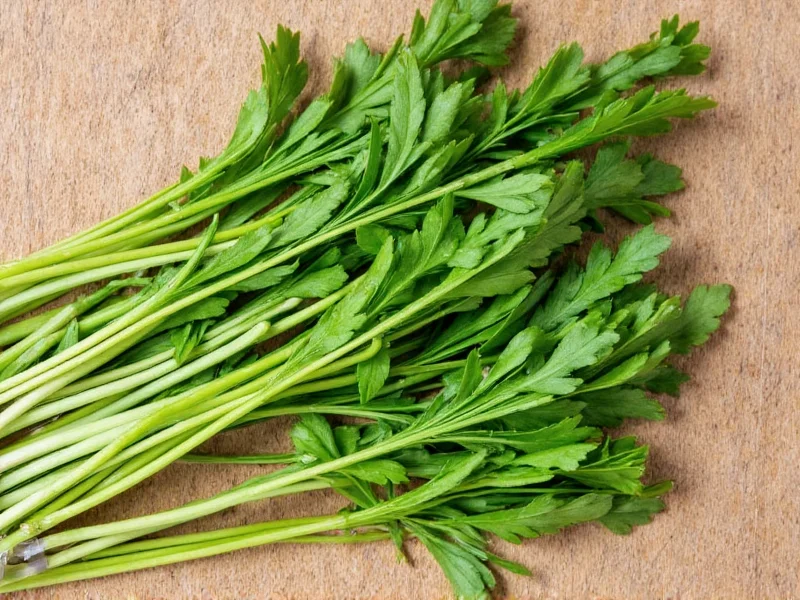Tarragon's unique flavor makes it one of the most recognizable herbs in the culinary world. This perennial herb belongs to the Artemisia genus and delivers a sophisticated taste that elevates numerous dishes. Understanding what flavor is tarragon exactly helps home cooks and professional chefs alike harness its full potential in the kitchen.
The Complex Flavor Profile of Tarragon
When you bite into a fresh tarragon leaf, you'll first notice the dominant anise-like sweetness reminiscent of fennel or star anise, but more delicate. This is quickly followed by subtle grassy undertones and a gentle peppery finish. The aftertaste often carries a slight bitterness that balances the initial sweetness, creating a complex flavor experience.
What makes tarragon particularly interesting is how its flavor changes based on preparation. Fresh tarragon offers the most vibrant, nuanced taste with pronounced aromatic qualities. Dried tarragon retains the anise notes but loses some of the subtlety, becoming more one-dimensional. When cooked, tarragon's essential oils release their full complexity, making it ideal for sauces, dressings, and slow-cooked dishes.
French vs Russian Tarragon: A Flavor Comparison
Not all tarragon is created equal. The two main varieties—French and Russian—have significantly different flavor profiles that impact culinary applications.
| Characteristic | French Tarragon | Russian Tarragon |
|---|---|---|
| Flavor Intensity | Strong, complex | Mild, less distinctive |
| Anise Notes | Pronounced sweet licorice flavor | Faint anise undertones |
| Additional Notes | Grassy, peppery, slight bitterness | More generic herbal taste |
| Culinary Value | Preferred by chefs worldwide | Less desirable for serious cooking |
| Growth Habit | Sterile, must be propagated by cuttings | Seeds freely, more vigorous growth |
Culinary Applications of Tarragon
Understanding what does tarragon taste like helps determine its best culinary applications. The herb shines in dishes where its delicate anise flavor can complement rather than dominate.
Classic French cuisine features tarragon prominently in Béarnaise sauce, where its sweet-licorice notes balance the richness of egg yolks and butter. It's equally essential in Fines Herbes, the traditional French herb blend. When considering what dishes pair well with tarragon, look to chicken, fish, eggs, and vegetables like asparagus and artichokes.
For home cooks wondering how to use tarragon in cooking, add fresh leaves toward the end of cooking to preserve their delicate flavor. Tarragon vinegar makes an excellent base for salad dressings, while tarragon butter elevates simple proteins. The herb also works beautifully in creamy sauces, omelets, and seafood dishes.
Tarragon Substitutes and Complementary Flavors
If you're out of tarragon or curious about tarragon substitute flavors, several options exist, though none perfectly replicate its unique profile. Fresh basil with a pinch of fennel seed comes closest for many applications. Dill offers a similar grassy note but lacks the anise quality. For French tarragon specifically, a combination of chervil and a tiny bit of anise seed may work in a pinch.
When exploring tarragon herb taste characteristics, note how it pairs exceptionally well with other ingredients. Lemon brightens its herbal notes, while vinegar enhances its aromatic qualities. Tarragon complements creamy elements like yogurt or sour cream, making it ideal for dips and dressings. It also works harmoniously with other herbs including chives, parsley, and chervil.
Common Misconceptions About Tarragon
Many home cooks wonder is tarragon similar to basil—while both are culinary herbs, their flavor profiles differ significantly. Basil offers sweet, peppery notes with clove-like undertones, while tarragon's signature is its anise flavor. Another misconception is that Russian tarragon makes an acceptable substitute for French; in reality, Russian tarragon lacks the complex flavor that makes French tarragon so prized.
Understanding fresh tarragon flavor notes versus dried is also crucial. Drying diminishes tarragon's delicate nuances, resulting in a more one-dimensional flavor. For the best results, use fresh tarragon whenever possible, adding it late in the cooking process to preserve its aromatic compounds.
Growing and Storing Tarragon
For gardeners curious about tarragon flavor profile development, growing conditions significantly impact taste. French tarragon thrives in well-drained soil with full sun. The flavor intensifies when the plant experiences mild stress, such as slightly dry conditions. Harvest leaves in the morning after the dew has dried for peak flavor.
To preserve tarragon's distinctive taste, store fresh sprigs in a glass of water in the refrigerator, covered loosely with a plastic bag. For longer storage, freeze leaves in ice cube trays with water or oil. Drying tarragon works but significantly alters dried tarragon taste difference compared to fresh, making it less versatile in delicate applications.











 浙公网安备
33010002000092号
浙公网安备
33010002000092号 浙B2-20120091-4
浙B2-20120091-4